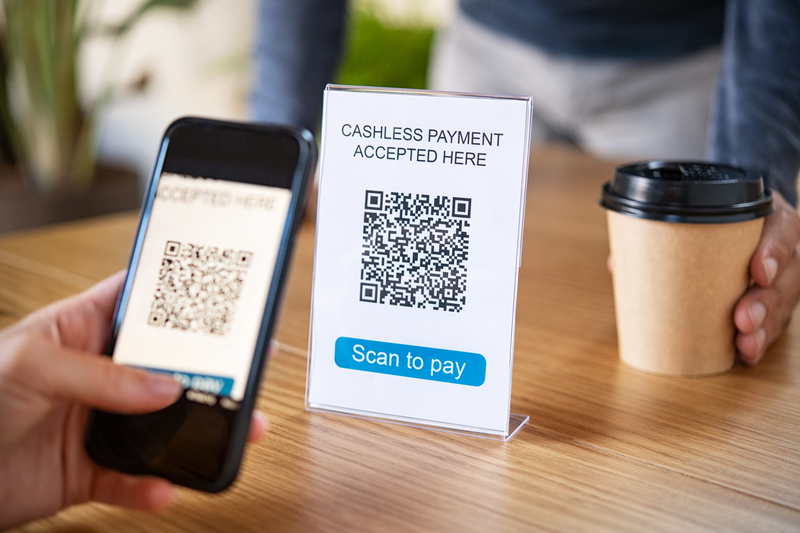In recent years, Quick Response Code Indonesian Standard, or QRIS, has become an integral part of daily life across the archipelago. From the bustling streets of Jakarta to the remote villages of rural Indonesia, a single QRIS code can be found at virtually every merchant, from street food vendors to large retail chains. While most people are familiar with using QRIS for making payments to businesses, a powerful and increasingly popular feature has emerged: the ability to send money with QRIS for person-to-person (P2P) transfers. This innovative capability is transforming how people split bills, pay back friends, and manage their personal finances. This article will serve as a comprehensive guide, demystifying the process and highlighting the immense benefits of using QRIS for money transfers.

What is QRIS? A Quick Refresher
For those new to the concept, QRIS is Indonesia’s national, standardized QR code for digital payments, regulated by Bank Indonesia. Before its introduction, different banks and e-wallets had their own proprietary QR codes, creating a fragmented and inconvenient payment landscape. QRIS unified these systems, allowing a customer to scan a single QR code from any mobile banking or e-wallet application. This interoperability is the core strength of the QRIS ecosystem.
The universal nature of QRIS has made digital transactions seamless for consumers. However, its primary function was for B2C (Business-to-Consumer) transactions—a customer paying a merchant. The new P2P transfer feature marks a significant evolution, extending this convenience to C2C (Consumer-to-Consumer) interactions.
Beyond Payments: The Evolution to Peer-to-Peer Transfers
The concept of using a QR code to transfer money between two individuals might seem new, but it’s a natural progression of digital finance. Imagine this scenario: you’ve just finished a meal with friends, and you need to split the bill. Instead of manually typing a long, complicated bank account number—and risking a typo—you can simply scan your friend’s personal QRIS code. The transfer is instantaneous, accurate, and completely secure.
This new QRIS money transfer function works because the QR code no longer just contains a merchant’s ID. It now holds the recipient’s bank account or e-wallet information in a standardized format. This allows for a direct, real-time transfer from one person to another, regardless of which financial institution or e-wallet they use. The entire process is handle within your mobile banking or e-wallet application, making it intuitive and user-friendly.
How to Send Money with QRIS: A Step-by-Step Guide
The process for a QRIS peer-to-peer transfer is remarkably simple and mirrors the familiar experience of paying a merchant.
- Open Your Mobile Banking or E-Wallet App: Log in to your preferred financial application (e.g., Bank BCA, Bank Mandiri, DANA, GoPay). Ensure that the app supports the QRIS transfer feature, as most major ones do.
- Scan the Recipient’s QRIS Code: Your friend or family member will need to generate their personal QRIS code from their own mobile banking or e-wallet app. They can display this on their phone screen or even have a printed version. Simply open the “Scan” function in your app and point your camera at their QR code.
- Enter the Amount and PIN: Once the scan is complete, your app will automatically pull the recipient’s name and account details. You will then be prompted to enter the amount you wish to send. After verifying the details, you will confirm the transaction with your personal identification number (PIN) or biometric security (e.g., fingerprint).
- Instant Confirmation: The money will be transferred instantly. Both the sender and the recipient will receive a real-time notification of the successful transaction, along with a digital receipt for their records.
This process eliminates the risk of human error associated with manual entry and makes transactions faster than ever before. For example, sending Rp 150,000 to a friend to pay for concert tickets can clear in a matter of seconds.
The Key Advantages of Using QRIS for Transfers
The shift to using QRIS for P2P transfers is not just about convenience; it offers significant practical benefits.
- Universal Interoperability: This is the standout feature of QRIS. You can send money from your Bank Mandiri account to a friend’s BNI account, or from your DANA e-wallet to a relative’s BCA account. The system seamlessly connects different financial institutions and platforms, eliminating the need for complex, manual interbank transfers.
- Enhanced Security: When you transfer money using a QRIS code, the risk of entering the wrong account number or falling victim to a fraudulent scheme is dramatically reduced. The QR code contains verified, standardized data. The transaction is protect by your mobile banking app’s security protocols and Bank Indonesia’s robust regulatory framework.
- Low to No Transaction Fees: A significant advantage of using QRIS for money transfers is the favorable fee structure. Many banks and e-wallets offer this service for free, making it a more cost-effective option than traditional interbank transfers. This encourages the adoption of digital finance for even small, everyday transactions.
The Future of Money in Indonesia
The evolution of QRIS from a simple payment tool to a universal transfer solution is a testament to Indonesia’s rapid digitalization. It’s a key driver in the country’s push towards a cashless society, making financial services more accessible, efficient, and secure for everyone. As more people and businesses embrace this technology, sending money will become as simple and routine as scanning to pay. The QRIS ecosystem is not just changing how transactions are made; it’s building a unified, interconnected digital financial future for Indonesia.